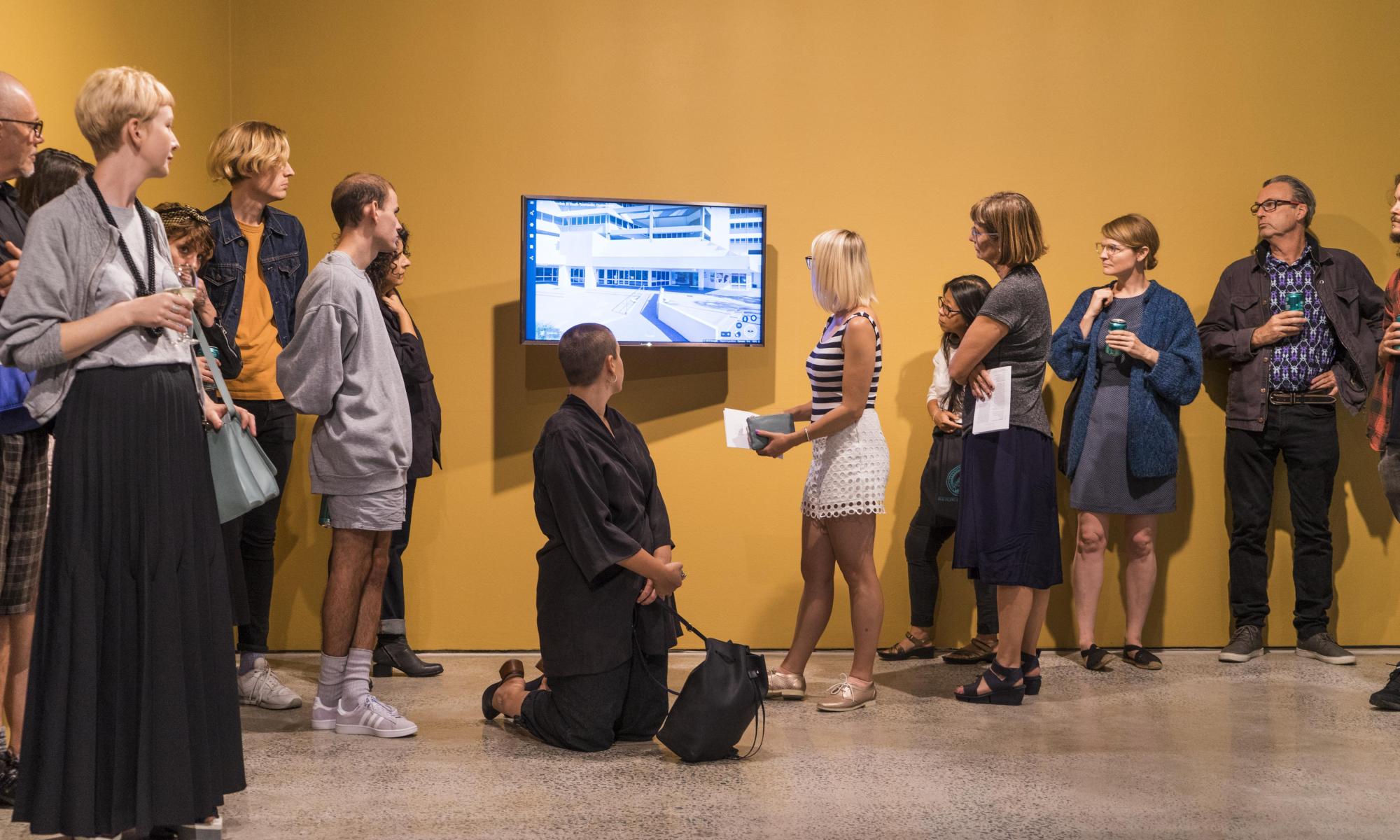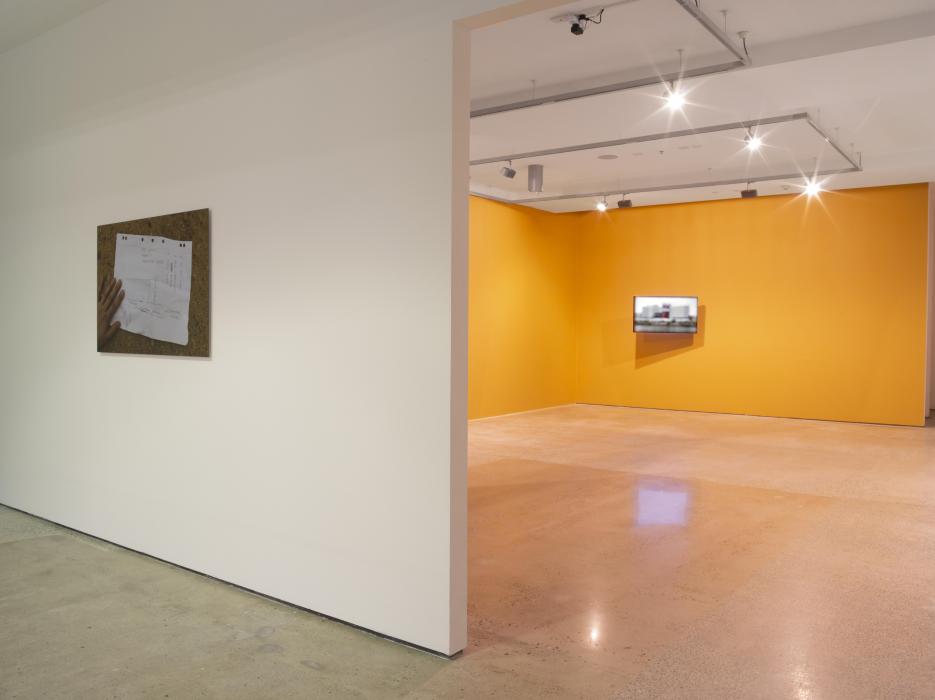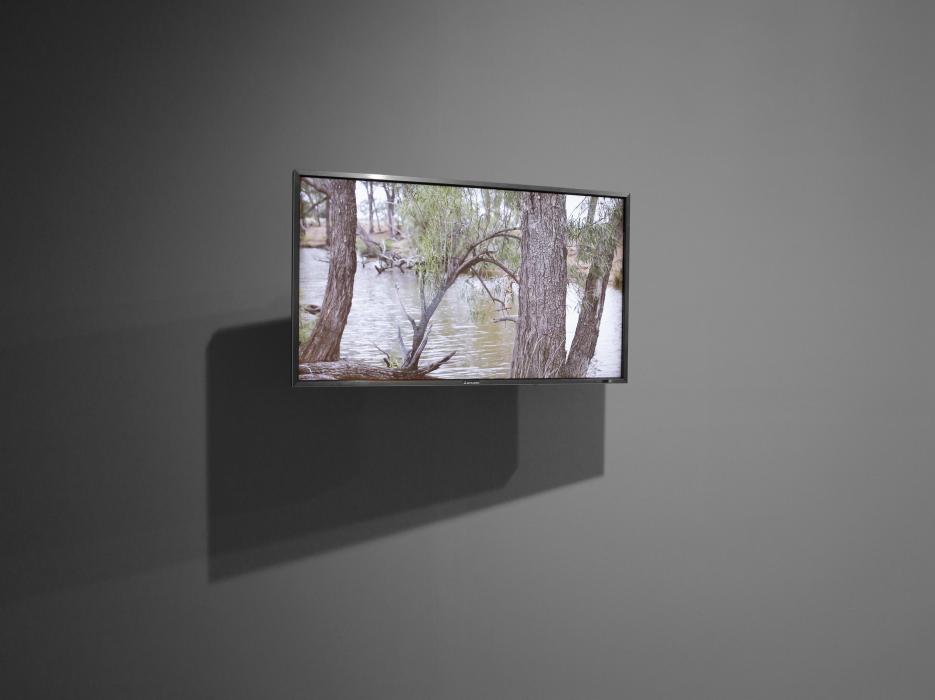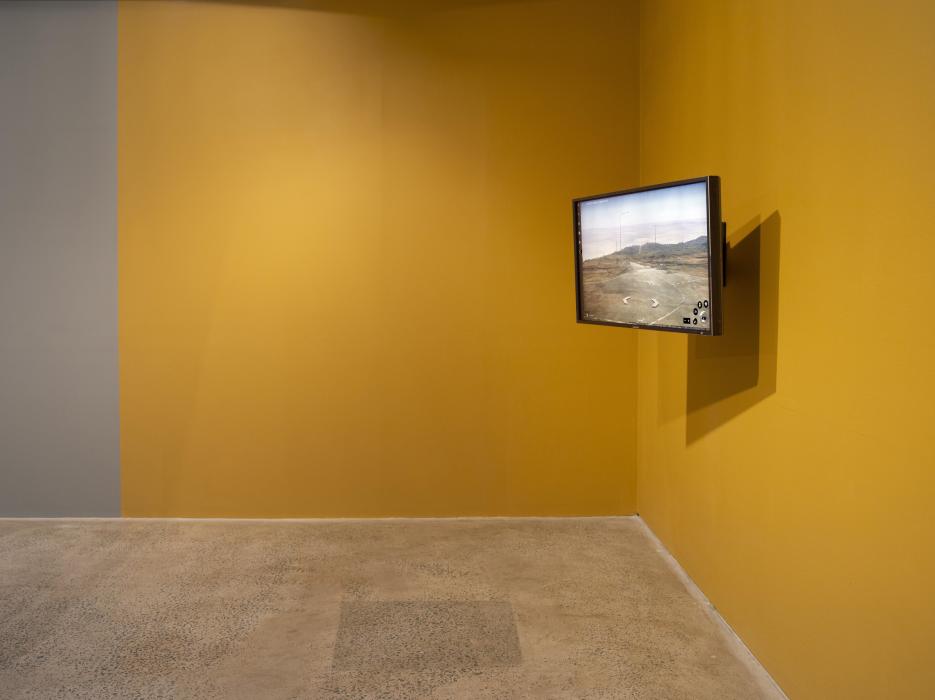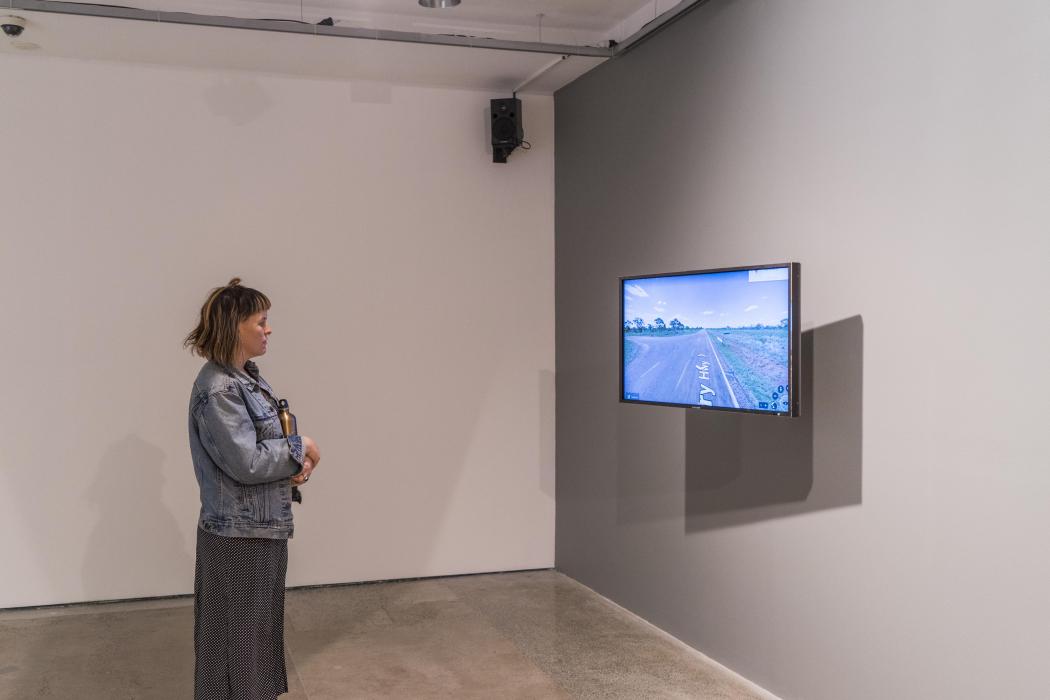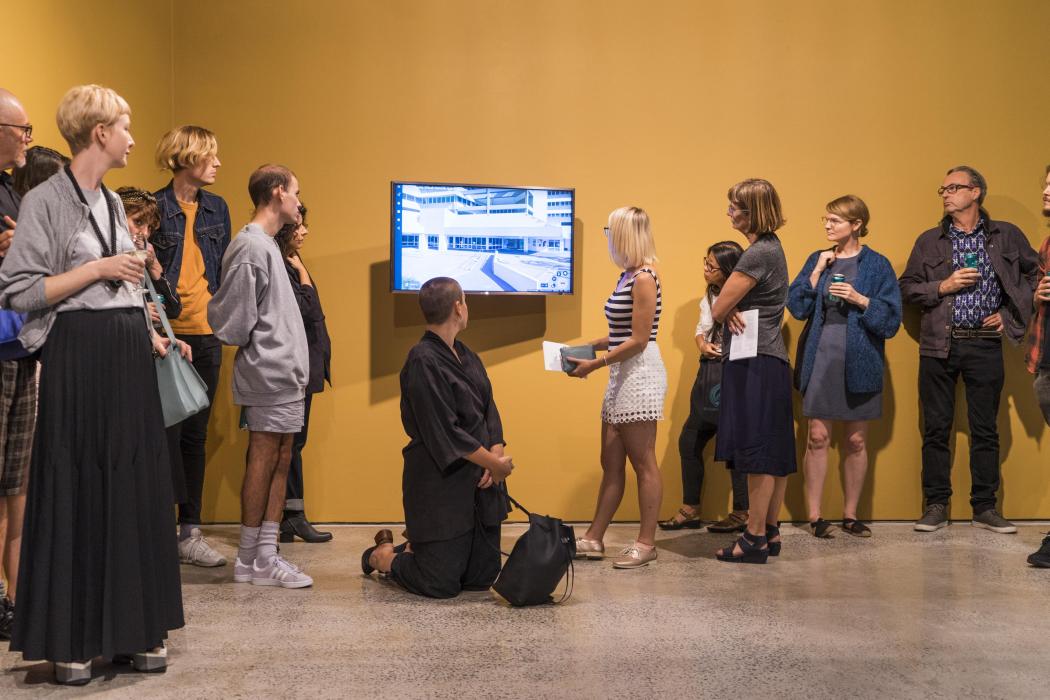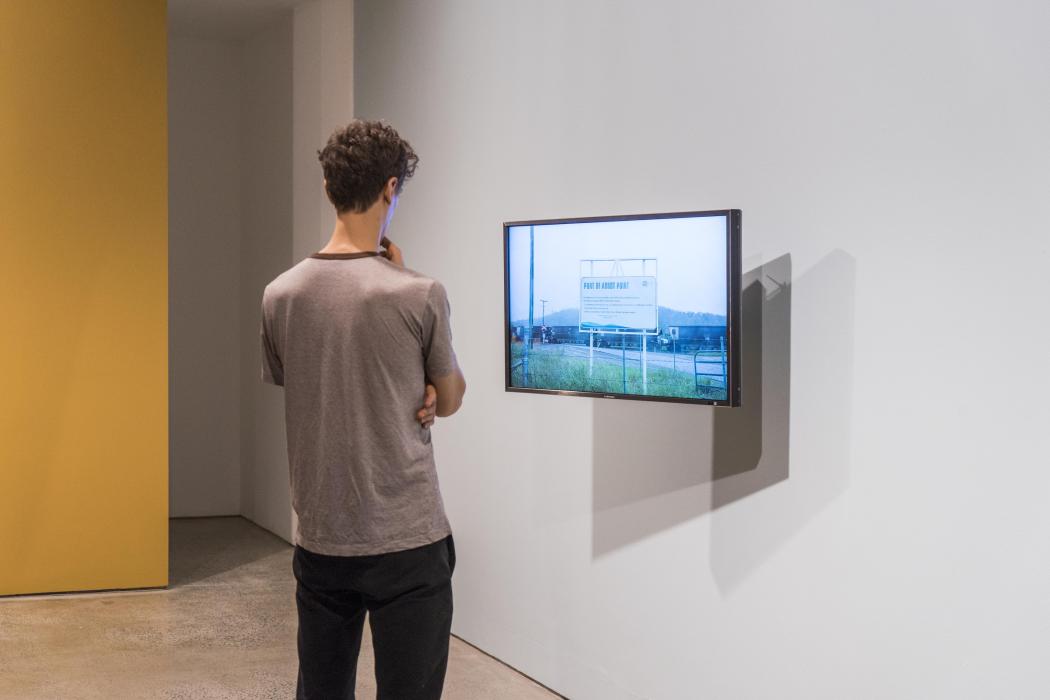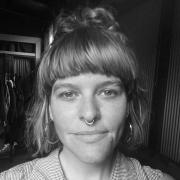A mechanical fly on the wall
In Transparency and other worries, Lu Forsberg uses video from Google and their own research trip to the Galilee Basin to create a map of sites across central and north Queensland that are significant to the Adani Carmichael Coal Mine proposal and the collective political imagination surrounding it. Forsberg’s exhibition explores the shortcomings of online geography and onsite access to land, public access restricted in both spaces. Mining practices in Australia are notoriously opaque: corporate procedures are obfuscated, access to locations becomes exclusive, and the impacts of mining on the communities connected to these places— traditional owners, local residents, workers—are rarely visible. The Carmichael Coal Mine is a rare example of a mining project visible to the public, due to tireless campaigning by the Wangan & Jagalingou Family Council, the traditional owners of the land across the Galilee Basin.
Upon walking into the IMA I immediately register an aural aspect to the show; Poephila cinta cinta (2018) is an audio recording of a bird that could be part of a soothing rainforest sleep soundtrack. The Southern Black Throated Finch is concurrently absent and present from the landscape of the show. The bird is endangered in Queensland and the site of the proposed mine is its central habitat. Forsberg did not hear or see the bird in its natural landscape, but this is not a failure, as the artist’s use of audio from the internet enables the bird’s elusiveness and endangered status to be felt more fully. The gallery walls are painted in sections of orange, blue, and grey, demarcating three video works, that loosely map sites significant to the mine proposal onto the gallery space. The exhibition guide further veils this physical landscape with a political one.
Marking the entrance to the gallery is a photograph of a hand-drawn map, sparse with lines representing roads. A few directions such as ‘DO NOT TURN’ and ‘KEEP STRAIGHT AHEAD TO CARMICHAEL RIVER’ form the guiding points. In the photograph, a hand holds a piece of lined A4 paper against rocky earth. The exhibition guide tells me that Mud Map (2018) shows the black biro lines drawn by Deb Alvoen, a tourist information officer in central Queensland. This map was Forsberg’s guide to the proposed mine site excluded from online maps. Within the exhibition, it signals the space inside the gallery as a landscape transposed.
7 Tomlins St (2018) named after the address of the Adani offices in Townsville, dislocated from, yet pivotal to the proposed mine site is situated on the northern wall of the gallery. On the screen, a computer cursor opens a link to a state government map of a sizable part of central Queensland. The map is covered in a dense web of lines but is almost bare of words, hence impossible to navigate. Footage switches to the Adani building, squat, white and imposing, filmed from across the river. The only movement is water flowing east offscreen. The silent extended exposure of this hulking monolith is reminiscent of a building in an action movie that will soon be blown up. The shot flicks to the familiar yellow figure from Google Maps Street View, exploring the car park outside the building before shooting down the road, a Google Maps trajectory cut by Forsberg to be seamless and expedited; chunks of land can be chopped out, like making a mine. A roadsign reading ‘Bowen’ preceeds an aerial Google Earth view of land meeting sea marked ‘Abbot Point’. The view zooms across the ocean, watermarked ‘Google 2018’, a jarring claim for ownership. The video loops, mining the internet itself. I forget and remember that a mine is something that is physically made—like a wooden bench, like a cake.
Following river east across the gallery, Departure (2018) captures an Aurizon coal train speeding toward the Port of Abbot Point, adjacent to the Great Barrier Reef; the proposed mine will require expansion of the port and the surrounding seabed. According to the exhibition guide, the train runs close to the Whitsundays—the all seasons gateway to the reef, but the level crossing captured on an overcast day, boom gates down, red lights flashing, seems a world away from tourist fodder. Barbed wire, power lines and fence posts delineate space. A startled crow flies away from the tracks and offscreen before the train blasts across the landscape, reducing the foggy mountain that fills the frame to a backdrop; the contemporary landscape is moving forward, fast and dirty. Behind me, the finch still sings.
Cattle Station (2018) starts with the view of a faded, hand-painted road sign on the grazing land at Elgin Downs. Forsberg begins the video with a shot of the sign from Google Map Street View before their own footage of the sign in situ disperses into scenes of the country around Elgin Downs, close up shots of plants, soil, and water. A view of eucalyptus leaves slowly dancing on the branch lines up perfectly with the buzz of a fly in the audio work Field recording at Moray Downs (2018) evoking both the cinematic eeriness of the colonial country-fearing Picnic at Hanging Rock from 1975, and the satire of Australian cinema seen in Soda_Jerk’s Terror Nullius (2018). The invasive buzz of the fly penetrates the gallery, making clear that fauna has no place in climate controlled concrete rooms.
In Forsberg’s work, humans show up rarely and only around the edges. A dark-windowed four-wheel drive cruising past the Elgin Downs road sign. A figure in hi-vis bobbing across the distant entrance of the Adani headquarters. The computer cursor connected to an unseen human hand, making choices. Human impact, though, is visible everywhere in the show. The Southern Black Throated Finch’s scarcity, if not absence in the landscape is due to human intervention. Its call imposes itself over the gallery-scape, mirroring human imposition on the bird’s habitat.
In an artist talk Forsberg remarked that ‘places of political contention are hard to get to.’ I wonder if the landscape-for-gallery Forsberg has created would exist if not for that ‘mud map’. It feels like the aim of the show—to discuss access to a contested site—fulfilled itself through this chance face-to-face connection with another person. Would we be privy to visual documentation of this environment if not for access enabled by local knowledge? Forsberg presents records of land that expand the view of what mining means and does, encouraging the discussion around it. The work succeeds in making the site abstracted by corporations visible, and renders sites of political contention less difficult to get to. Transparency and other worries reminds me that in Australia a physical landscape and a political one are woven and now grafted together; this landscape is always under contention.

